by Dave Smallshire and Andy Swash
Third Edition. Fully revised and updated.
Published by WILDguides (Princeton)
ISBN: 978-0-691-16123-5
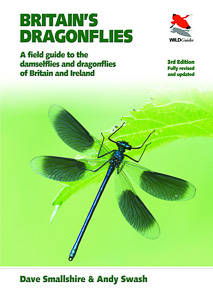 |
From the publisher: Britain's Dragonflies is the only comprehensive photographic field guide to the damselflies and dragonflies of Britain and Ireland. Written by two of Britain's foremost experts, this fully revised and updated edition features hundreds of stunning images and identification charts covering all 56 resident, migrant and former breeding species, and seven potential vagrants. The book focuses on identification - both of adults and larvae - highlighting the key features. Detailed species profiles provide concise information on identification, distribution, flight periods, behaviour, habitat, status and conservation. Other sections cover biology; how to watch, photograph, record and monitor Dragonflies; conservation status and legislation; and introduced exotic species.
In the thirty years I have been watching dragonflies the field guides have just got better and better. This third edition of Britain's Dragonflies continues the trend. It is outstanding.
Most importantly, it contains absolutely everything you need for confident field identification of any UK dragonfly or damselfly. The authors have really thought this through. Beginners will appreciate the summary guide to the groups - chasers, skimmers, darters &c. - with photos of representative species. Then there are the comprehensive identification charts, bringing together in one place the key features of all species and illustrated with stylised, coloured diagrams. A guide to hawkers, emperors and emeralds in flight is also very useful. I remember, in the early days, watching emerald dragonflies flying non-stop over a lake and trying without great success to identify them from standard paintings of the uppersides. Finally the main species accounts are copiously illustrated with excellent photos of males, females and distinctive forms. By cunning splicing of pictures, many more individuals are presented than is usual in a photo-guide. Each account includes a map, stylised diagrams of abdomen markings, face details and other key features, spotting tips and notes on identification, behaviour, habitat and conservation status. There is less information on ecology and behaviour than in the other excellent guide to Britain's dragonflies, by Brooks and Lewington - the focus in the present book is on finding and identifying dragonflies. A useful introductory section includes advice on where to find the rarer species.
This latest edition (2014) is bang up-to-date - even to the extent of anticipating future additions to the British list. So, the section on vagrants includes potential vagrants that have not yet been recorded in the UK but are likely to be, with the ever increasing interest in dragonflies and the steady northward march of many southern species. Southern darter (Sympetrum meridionale) is one such potential vagrant. This species might easily be passed over as a common darter - and maybe has been - so a full, pre-emptive species account is an excellent idea. I did not know, before browsing this book, that the dainty damselfly (Coenagrion scitulum) has come back from regional extinction and now flies at four sites on the Isle of Sheppey, Kent.
Finally, perhaps of more minority interest, there is an excellent section on identifying larvae, including complete identification charts to all British species.
Verdict: Highly recommended!
I was extremely pleased to receive my review copy of this latest, third edition, of Britain's Dragonflies: A field guide to the damselflies and dragonflies of Britain and Ireland. The Odonata are a group that I have personally not had a great deal of experience but one that I have tentatively been meaning to investigate further. My initial reaction is that this extremely well planned, comprehensive guide, may well be the excuse I have been waiting for.
The book clearly focuses on the 'key features' identification of 63 different species - and this it appears to do well. This includes 56 resident, migrant and former breeding species and, a touch I particularly liked, the inclusion of 7 potential vagrants. Detailed species profiles, complete with stunning images and useable identification charts, deliver concise information on identification, behaviour, breeding habitats, population and conservation. I particularly liked, as a newbie to the world of dragons and damsels, the brief 'where to look', 'look-alikes', and 'observation tips' section at the bottom of each page. For those already with more experience, or wishing to probe deeper into their fascinating aquatic world, a section on the identification of larvae and exuviae is also included.
As a desktop reference guide it is clear and concise. As a 'use in the field' reference guide it is portable and perfectly designed. My copy came with a protective plastic cover, though I'm not sure if this is standard on all copies but a nice touch nevertheless. A5 in format it conveniently fits the pocket.
Recommended? Absolutely. I can't wait to go and try it out ...
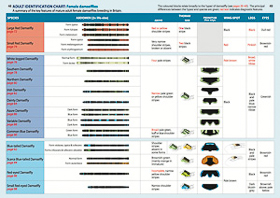 | 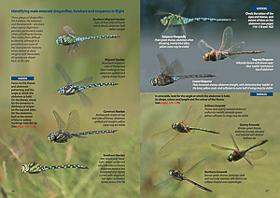 | 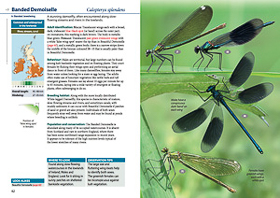 |
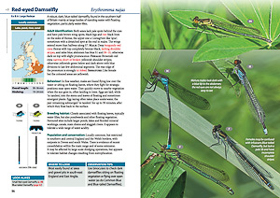 | 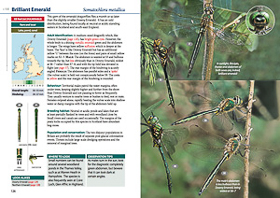 | 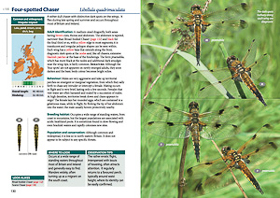 |
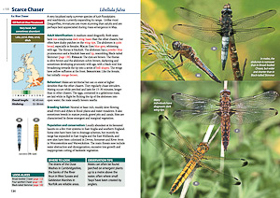 | 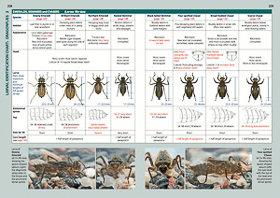 |
The book can be purchased from Princeton University Press.